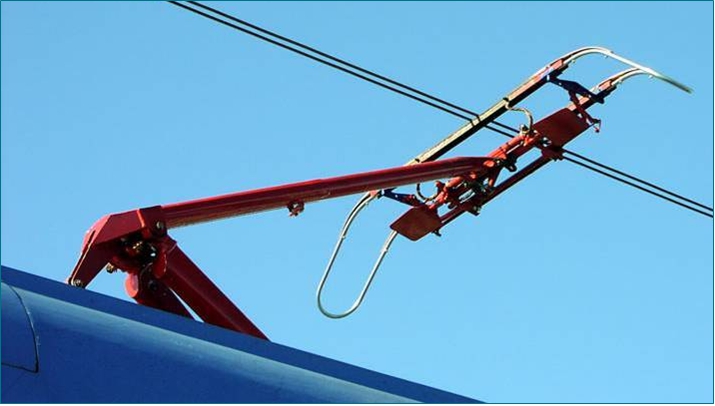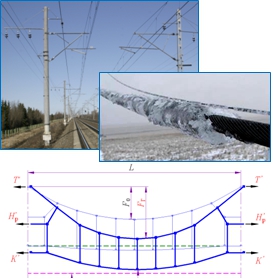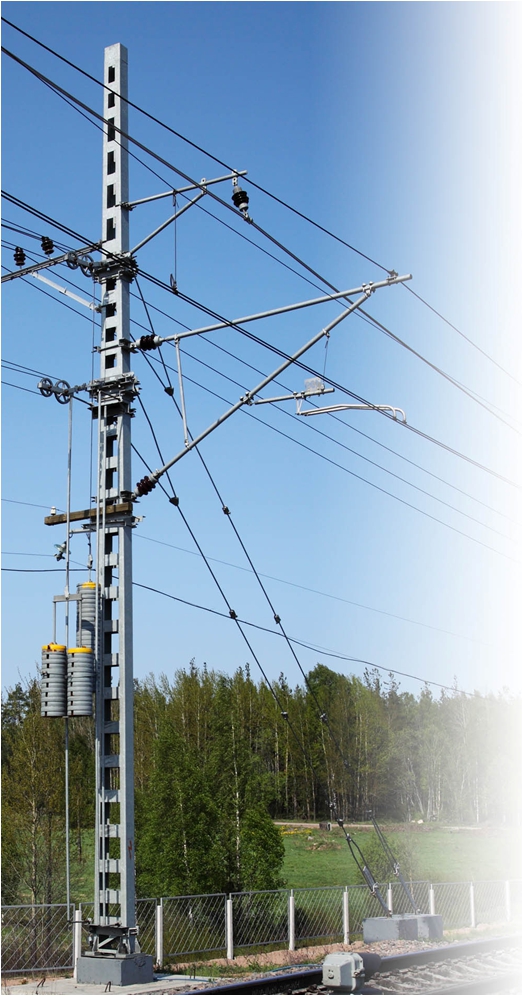
Catenary system? - Taking a closer look
 Catenary system is a mean for energy transmission from traction substations to the vehicles of electric stock. Energy, propelling heavy trains, is transferred through the tiny sliding collecting pantograph contact device with the overhead line. It is a complex technological task to ensure the contact reliability at extremely high velocities. The higher the velocity is, the greater the effect of the wave and oscillatory processes, that occur while collecting pantograph and overhead catenary interact. Should a collecting pantograph bow contact detaches from overhead wire, or should there be an electric arc caused by insufficient contact pressure, all this may lead to the contact element overburning or increased wear-out thereof, thus deteriorating of the traction equipment of electric stock, also causing the EMC noise. An excessive contact pressure may increase a mechanical wear-out and there is also a chance of the overhead catenary elements being damaged by the collecting pantograph, and, as a result, an emergency may occur.
Catenary system is a mean for energy transmission from traction substations to the vehicles of electric stock. Energy, propelling heavy trains, is transferred through the tiny sliding collecting pantograph contact device with the overhead line. It is a complex technological task to ensure the contact reliability at extremely high velocities. The higher the velocity is, the greater the effect of the wave and oscillatory processes, that occur while collecting pantograph and overhead catenary interact. Should a collecting pantograph bow contact detaches from overhead wire, or should there be an electric arc caused by insufficient contact pressure, all this may lead to the contact element overburning or increased wear-out thereof, thus deteriorating of the traction equipment of electric stock, also causing the EMC noise. An excessive contact pressure may increase a mechanical wear-out and there is also a chance of the overhead catenary elements being damaged by the collecting pantograph, and, as a result, an emergency may occur.

An overhead system functions in the open, so it is highly exposed to various effects, these are: meteorological, mechanical, electrical, chemical, biotic, as well as anthropogenic. During its entire working lifespan, the catenary system is to withstand all the effects listed above. What is peculiar about this system is that it has no reserve supply: should some connections are out of order, the whole area goes down, and it means that the trains are rendered motionless within an emergency area. Consequently, the whole railroad reliability depends much on how reliable the catenary system is.
 This is a complex mechanical system. The system complexity is determined through its component diversity, distributed parameters, interaction with the environment and other systems as well as its con-structional multivariance.
This is a complex mechanical system. The system complexity is determined through its component diversity, distributed parameters, interaction with the environment and other systems as well as its con-structional multivariance.
The current-collection process and the rules of catenary system functioning in different conditions are actually the research object of many national and foreign scientists and specialists. A few schools of science were founded and numerous guides, monographs, and manuals were issued.
Nowadays, however, there are technological problems still aplenty, and these require a great deal of thorough research. The greater the velocities and the higher the tonnage ratings are, so the more drastic are the conditions in which an overhead system has to function. Gaining of more and more experience determines the necessity to upgrade a series of connections and structures. Besides, the market economy speaks its terms. To ensure the catenary system competitiveness, make sure its life cycle cost is as low as possible.
The overhead system requires more precise calculation and design methods along with the advanced technologies and innovative materials. A catenary system of long working lifespan requires working out of newer modes of servicing, implementing of special diagnostic means, based on the conditions.
No efficient problem solution is possible unless systemized scientific research is done.
Copyright © 2004-2026 J.S.C. «UNIVERSAL CATENARY SYSTEMS» Developed by½Internet Promotion╗
